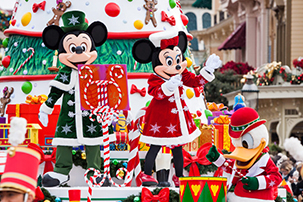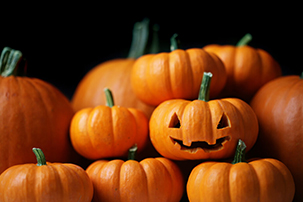If you’re anything like me, one of your first memories of Easter was the all-consuming thrill of searching for those hard-to-find plastic Easter eggs. But have you ever stopped to ask yourself: where do these little gems come from? Read on to discover the sordid truth behind how plastic Easter eggs are made!
Introduction
Easter eggs, also known as Paschal eggs, are colorful eggs that have been used to celebrate Easter since the Middle Ages. Though they were once made from real chicken eggs, today most are made with plastic. While the manufacturing process has changed over time, the craft of making decorative plastic Easter eggs remains an art form practiced by highly skilled individuals.
The following provides an overview of how plastic Easter eggs are made and decorated in various cultures around the world:
The Manufacturing Process
Plastic Easter eggs are shaped from polystyrene pellets by a process called injection molding. Essentially, this involves melting polystyrene pellets and plasticizing them, which forces the molten material into a pre-made steel cavity or form in the shape of an eggshell. The split halves are cooled for about fifty seconds in air-cooled “carriers” which hold each half of the egg in place within a small frame to prevent distortion as the egg cools. Once cooled, the shells are pulled out of the mold and trimmed out of any excess material that forms on it while cooling.
The rim that holds two halves together is then created by roughening up one half so adhesive molecules can fill the small crevices and give added strength to an otherwise smooth surface. The spray adhesive is applied to one side only, which limits contact with it to prevent overadhesion. The two sides are then snapped quickly together before they separate due to surface tension – this creates a bond between both components that keeps them tightly together when handled after manufacture.
The plastic Easter eggs usually require additional finishing such as:
- Coloring
- Decorating
- Filling
- Sealing off part or all of its interior space for various applications such as home crafts for hiding candy or other trinkets inside without compromising its strength and aesthetic appeal.
Raw Materials Used
To create plastic Easter eggs, a variety of raw materials are needed. Several different types of plastics are used, including polyethylene (PE) and polypropylene (PP). These materials form the basic structure of the Easter eggs and offer excellent impact strength and flexibility. Other materials used in the manufacturing process can include pigments, dyes, additives and fillers that give each egg its unique appearance.
A variety of manufacturing techniques are employed to ensure quality construction of plastic Easter eggs. Injection molding is perhaps the most common technique used to create hollow plastic eggs; it involves injecting heated plastic material into a hollow mold cavity in the shape of an egg by using injection molds and a powerful injection machine. The machine then cools down the resulting plastic egg until it can be removed from the mold without deformations or damage.
Once cooled, finishing touches such as coloring agents and/or decorative details like drawings or logos may be added for visual appeal. After this stage is complete, each finished egg must be tested for product safety and quality before packing them away for sale.
Molding and Shaping
The production of plastic Easter eggs starts with molding, where plastic is injected into a metal or steel mold. The injection process is generally based on one side of the mold being forced against the other to create the egg shape. The two halves come together and pressure injects molten plastic into a two-part metal steel mold. Modifications to the egg size and shape can be made to create ridges, bubbles and novelty shapes. Plastic eggs may also be embossed with logos and messages of commercial purposes or left plain for decorating purposes.
Once cooled down and removed from the mold, the excess sprues – or attachments – are cut away from the body of the egg leaving a clean visible seam line. Depending on customer specifications, further processes such as
- printing
- painting
- glitter spraying
may take place before packing into individual bags for retail sale.
Decorating and Coloring
Once the plastic Easter egg shells have been molded and cooled, the next step is to decorate them. Specialized machines use inkjet printing to apply a layer of graphics onto the outside of the eggs. On some Easter eggs, movable parts are added for decoration. Then, solid colors are applied all over with a special dye process, transforming each of these colorless plastic eggs into beautiful products.
The third step in this process is to apply different colors on top of what has already been printed or colored. A “color wash” can be added to create a two-tone effect where one color appears over another color and creates interesting patterns on the eggs. Some designers like to add glitter during this stage as well after all of the other dyes and inks have dried. The glitter will shine when light hits it and makes the eggs look even more unique and festive! Finally after all of these steps are complete, shiny wax is applied on top for protection against scratches or fading over time.
Quality Control
The quality of plastic Easter eggs is critical for a successful product. Quality control procedures are used throughout the production process to ensure that each egg meets the standards set by the manufacturer and is suitable for use.
Quality checks start in the factory when batches of raw materials, such as plastics and dyes, are tested to make sure they comply with internal specifications. Once these arrive at the facility, they are blended to give an appropriate hue as well as resistance characteristics.
During manufacturing itself, multiple tests are conducted on machines and products at each stage. This ensures that everything adheres to safety requirements in terms of low toxicity, flammability and stability over time.
Finally, a representative sample of eggs is inspected before being packaged and sent out for retail sale, ensuring that only the best products reach consumers.
Packaging and Shipping
Once the eggs have been filled, they must be packaged and prepared for shipping. Depending on the size of the egg order and whether or not it is being shipped domestically or internationally will decide how it is to be packaged and shipped. For example, large orders will typically be placed in protective, secure cardboard boxes that are sealed tightly with tape to keep out dirt and moisture. Smaller orders may simply be packaged in plastic wrap.
The eggs then need to be weighed and labeled with information such as origin, destination and weight before they can be shipped. Depending on the preference of the customer, they can either go through a standard mail system such as USPS or UPS, or they can go through a private courier service such as FedEx or DHL. The method used may depend on cost and delivery time requirements but once decided upon, all that remains is to wait for them to arrive at their final destination safely!
Environmental Impact
When considering the environmental impact of plastic Easter eggs, it is important to consider all of the steps required in their production. Generally speaking, four components are essential for manufacturing plastic Easter eggs: packaging, energy for production, raw materials, and eventual disposal requirements.
- Packaging: Plastic Easter eggs require a wide variety of materials for packaging, including plastics and foam filler which must be discarded afterward.
- Energy for Production: The machines used in plastic Easter egg manufacturing require electricity to melt down plastic and create precise shapes. This energy usage produces greenhouse gases and other emissions, which can be detrimental to the environment.
- Raw Materials: The material used to make most types of plastic Easter eggs come from petrochemicals or crude oil, which are both non-renewable resources.
- Disposal Requirements: Even after they have been used or thrown away, discarded plastic Easter eggs do not decompose or disintegrate easily. They often end up in landfills or bodies of water, where they will reside until they eventually break down into tiny microplastic particles that can remain suspended in the environment for centuries or longer with devastating ecological consequences.
It is important to note that there are alternatives available, like recycled paperboard or palm leaves, which offer more sustainable options for those seeking an eco-friendly solution for their holiday needs!






